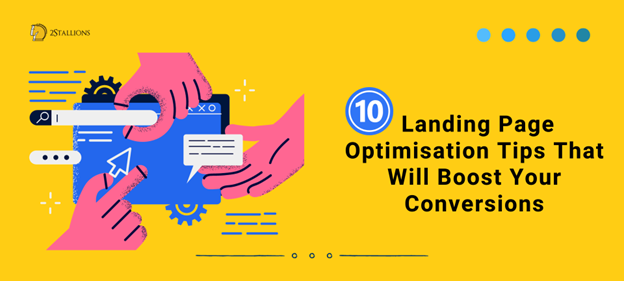Content
SHARE

In digital marketing, understanding the correlation between user experience (UX) and key website metrics is crucial for success. UX is pivotal in shaping how visitors interact with a website and can directly impact metrics such as bounce rates and conversions. By optimising UX design, businesses can create an appealing and user-friendly website that encourages visitors to stay longer, engage more, and ultimately convert customers.
Understanding the Correlation between UX and Website Metrics
To delve deeper into the impact of UX on website metrics, it is essential to define what UX entails and highlight its importance in digital marketing.
Defining UX and its Importance in Digital Marketing
UX refers to the experience that a visitor has when interacting with a website, encompassing design, navigation, functionality, and content. It goes beyond aesthetics and focuses on creating a seamless and enjoyable user journey.
Moreover, UX design is a multidisciplinary field that combines elements of psychology, design, and technology to create user-friendly interfaces. By understanding user behaviour and preferences, UX designers can tailor websites to meet the needs and expectations of their target audience.
In the digital marketing landscape, a well-designed UX can contribute significantly to a website’s success. It can increase brand credibility, and build positive user perceptions, leading to higher conversion rates.
The Role of Website Metrics in Assessing Performance
Website metrics provide valuable insights into a website’s performance, helping businesses understand how visitors interact with their site. Key metrics such as bounce rates, conversion rates, and user engagement metrics enable businesses to measure their success and identify areas for improvement.
Furthermore, website metrics play a crucial role in informing digital marketing strategies. By tracking user behaviour and engagement, businesses can refine their marketing efforts to better resonate with their target audience. This data-driven approach allows companies to allocate resources effectively and maximise their return on investment.
By analysing these metrics, businesses can gain valuable insights into how their website is performing, identify potential bottlenecks, and make data-driven decisions to enhance user experience.
The Relationship between UX and Bounce Rates
Bounce rates are a significant website metric that measures the percentage of visitors who leave a site after viewing only one page. High bounce rates can indicate a lack of engagement and a missed opportunity for conversions.
Understanding the intricate relationship between User Experience (UX) design and bounce rates is crucial for website success. A well-crafted UX design can significantly impact bounce rates, influencing how visitors interact with a site and whether they stay or leave.
What is a Bounce Rate and why does it matter?
A bounce rate reflects the number of visitors who, for various reasons, exit a website without interacting further. It matters as it indicates the website’s ability to capture and retain the interest of its visitors. High bounce rates can suggest that the UX design is not engaging with the target audience.
Delving deeper into bounce rates unveils a wealth of insights into user behaviour and website performance. Each bounce represents a missed opportunity to convert a visitor into a customer, highlighting UX’s critical role in captivating and retaining audience attention.
How UX Design Can Influence Bounce Rates
Through thoughtful UX design, websites can reduce bounce rates by providing visitors with a positive and engaging experience. By streamlining navigation, improving page load times, and ensuring that relevant and valuable content is easily accessible, businesses can encourage visitors to explore further, reducing the likelihood of bounces.
Moreover, the impact of UX design goes beyond aesthetics; it encompasses the functionality and usability of a website. By incorporating user-centric design principles, businesses can create a seamless digital journey for visitors, enhancing engagement and lowering bounce rates.
UX design can also play a role in overcoming common barriers to engagement, such as confusing layouts or poor mobile compatibility. By addressing these issues, businesses can create a seamless and intuitive experience that keeps visitors on the site longer.
Embracing the symbiotic relationship between UX design and bounce rates is essential for optimising website performance and driving meaningful user interactions. By prioritising user experience and continuously refining design elements, businesses can cultivate a digital environment that captivates visitors and fosters long-lasting relationships.
Exploring the Impact of UX on Website Conversions
Website conversions are a critical measure of a website’s effectiveness in achieving its goals, whether it’s making a purchase, filling out a form, or signing up for a newsletter.
The Concept of Website Conversions
A website conversion occurs when a visitor takes a desired action, such as making a purchase or submitting a contact form. It is the ultimate goal of any business and is influenced by numerous factors, including UX design.
Ways in which UX can boost Conversion Rates
A well-designed UX can greatly enhance conversion rates. By creating clear call-to-action buttons, simplifying checkout processes, and optimising form design, businesses can remove barriers and make it easier for visitors to convert.
Moreover, by crafting persuasive and engaging content, businesses can build trust and compel visitors to take the desired action. User-friendly navigation and intuitive website structures also contribute to improving the overall user experience, increasing the likelihood of conversion.
When it comes to UX design, every detail matters. From the colour scheme chosen to the placement of elements on a webpage, each decision can impact how users interact with a site. For example, research has shown that using warm colours like red and orange for call-to-action buttons can create a sense of urgency and encourage users to click.
Furthermore, the loading speed of a website plays a crucial role in user experience and, consequently, conversion rates. Slow loading times can lead to high bounce rates as users lose patience and seek faster alternatives. Therefore, optimising image sizes, minimising HTTP requests, and leveraging browser caching are essential in improving website performance.
The Role of UX in Enhancing User Engagement
User engagement metrics provide insights into how visitors interact and engage with a website, showcasing the effectiveness of the overall UX design.
Understanding the role of User Experience (UX) in enhancing user engagement is crucial for businesses looking to create a compelling online presence. UX encompasses a range of factors, including usability, accessibility, and desirability, all of which play a significant role in shaping how users interact with a website.
The Significance of User Engagement Metrics
User engagement metrics, such as average session duration, pages per session, and social media shares, paint a picture of how visitors interact with a website. High user engagement indicates that the UX design successfully captures and retains visitors’ attention, leading to increased brand loyalty and higher chances of conversions.
Moreover, user engagement metrics can also help businesses identify areas for improvement in their UX design. By analysing user behaviour and interactions, companies can gain valuable insights into what aspects of their website are resonating with visitors and what areas may need refinement.
The Effect of UX on User Engagement and Interaction
UX design directly influences user engagement and interaction. By creating visually appealing layouts, intuitive navigation menus, and interactive elements, businesses can encourage visitors to explore more content and interact with the website. Furthermore, personalization and tailored experiences can enhance user engagement by providing relevant and targeted content to different user segments.
It is essential for businesses to continuously monitor and evaluate user engagement metrics to ensure that their UX design is meeting the needs and expectations of their target audience. By prioritising user experience and making data-driven decisions, companies can create a website that not only attracts visitors but also keeps them engaged and coming back for more.
The Future of UX and Website Metrics
The field of UX design and website metrics evolves continually, shaped by technological advancements and changing user expectations. Staying up to date with emerging trends is crucial for businesses seeking to optimise their websites.
Predicted Trends in UX Design
As technology advances, trends such as voice user interfaces (VUI), augmented reality (AR), and artificial intelligence (AI) will likely reshape the UX landscape. Businesses should embrace these emerging trends to remain competitive and provide cutting-edge experiences that captivate users.
The Evolving Role of Website Metrics in UX Evaluation
Website metrics will continue to play a vital role in evaluating the effectiveness of UX design. With advancements in analytics and data-driven decision-making, businesses can gain deeper insights into user behaviour and make informed UX design improvements to enhance key website metrics.
One emerging trend in UX design is the integration of virtual reality (VR) experiences. VR technology allows users to immerse themselves in a digital environment, creating a more engaging and interactive user experience. By incorporating VR into their websites, businesses can provide unique and memorable experiences that leave a lasting impression on users.
Another exciting trend is the use of biometric technology in UX design. Biometric data, such as facial recognition or fingerprint scanning, can personalise the user experience and enhance security. By leveraging biometrics, businesses can create seamless and secure interactions, building trust and loyalty with their users.
In conclusion, user experience (UX) is crucial in impacting key website metrics such as bounce rates and conversions. By prioritising UX design and ensuring seamless navigation, valuable content, and engaging experiences, businesses can increase user satisfaction, boost conversions, and ultimately achieve their website goals. As technology evolves, staying attuned to emerging trends and leveraging website metrics will be essential for businesses seeking to provide exceptional user experiences and drive digital success.
UX & Website Metrics FAQs
What is UX and why is it important for websites?
UX, or user experience, refers to the overall experience a user has while interacting with a website. It is crucial because a positive UX enhances user satisfaction, increases engagement, and drives conversions by making the site easy and enjoyable to use.
How does UX impact bounce rates on websites?
Good UX can significantly reduce bounce rates by ensuring that the website is user-friendly, loads quickly, and provides relevant, accessible content that meets users’ needs and expectations, encouraging them to explore more pages.
What UX strategies can help improve website conversions?
Strategies to improve website conversions include optimising the website’s design for usability, improving the quality and relevance of content, streamlining navigation, and ensuring that calls to action are clear and compelling.
How can website owners measure the impact of UX improvements?
Website owners can measure the impact of UX improvements by tracking changes in key metrics such as bounce rates, conversion rates, time on site, and user feedback. Tools like Google Analytics, user surveys, and usability tests are instrumental in gathering this data.

















